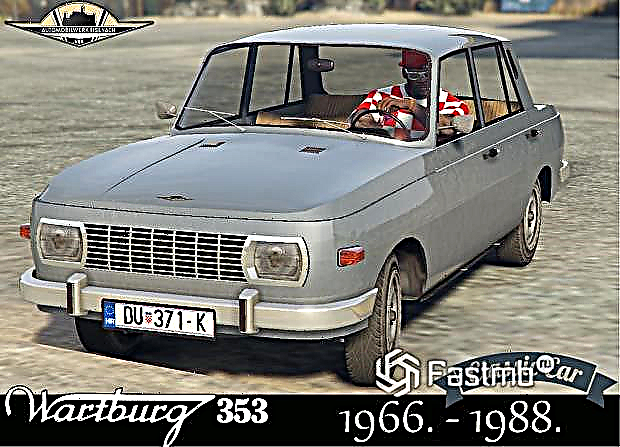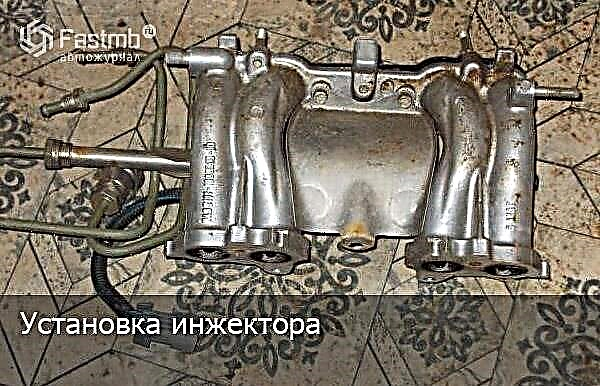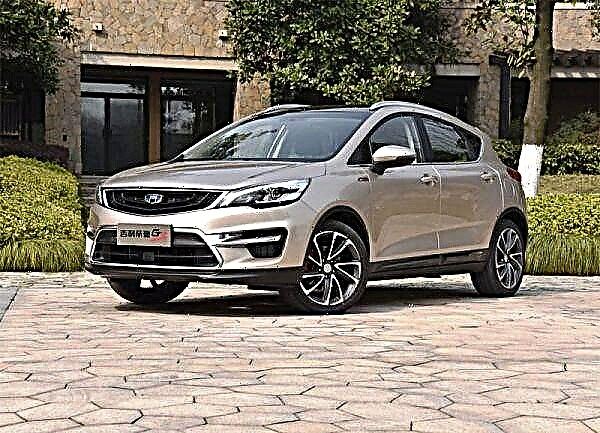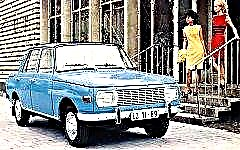

The content of the article:
- Leaders of socialism
- Trabant P601
- Wartburg 353
- Multicar
- The legacy of the GDR
Although the GDR existed as an independent state for only 41 years, it managed to become famous for its own unique auto industry. Horchs and Trabants, EMW and Wartburgs are simple, reliable and economical, they made a great contribution to the industry of their republic and mechanical engineering in general.
Leaders of socialism
The Second World War divided Germany into two warring camps. One of them tried to recover from the destruction and restore life, while the second began the construction of socialism. Since significant industries remained on the territory of the GDR, including BMW and Auto Union, the economy of the new republic was reasonably focused on the automotive industry.
Some factories in East Germany were redesigned for current needs, some began to implement their pre-war developments. For example, the luxury car manufacturer Horch has taken up the production of trucks, including the three-ton IFA H3 and the H6 heavy truck. And DKW remembered its pre-war developments of the DKW F9 model, and it was reworked into the IFA F9 runabout.
The lion's share of the newly created car industry was exported to Africa, Asia, Cuba and some European countries. Almost immediately, the GDR became the leader among other countries of the socialist camp in terms of the level and volume of automobile production, the historical maximum of which was recorded in 1986 in the amount of 265 thousand units per year.
Trabant P601

In the photo: Trabant P601 model 1989
The legendary model had a phenomenal success all over the world, which is surprising and inexplicable for a number of reasons.
It is worth starting with its small size and funny look, reminiscent of the Soviet Zaporozhets. Under its hood was a 26-horsepower 2-cylinder engine, too weak even for a 650-kilogram "kid".
Fuel came into it by gravity from a tank fixed above the engine, which, together with the battery, was a very dangerous structure in an accident. Moreover, the engine did not perceive pure gasoline, but exclusively mixed in a certain proportion with engine oil. With this mixture, the model was desperately smoking during the transportation of its owner.
The most interesting was the car body, made of organic plastic obtained by recycling textile waste. The birth of this material, called duroplast, was a necessary measure due to the shortage of thin steel suitable for the production of machines. Although its lightness made the car itself weightless and, therefore, economical, the thinness of the material did not protect against even the slightest blows. In addition to unpleasant chips and dents during careless driving, this feature made the model absolutely unrepairable in the event of a serious accident.
The most anecdotal quality of Duroplast was precisely its organic origin, which makes it ... quite edible. Emir Kusturica was not a lie when he showed in the film "Black Cat, White Cat" how the 601st model is swallowed by a cow! Such cases were indeed regularly recorded during the operation of the car.
But not everything was so bad in this car. For example, the rack and pinion steering, which was rare at the time, and without hydraulics ensured comfortable driving. The independent suspension had a very simple design, which made it efficient, reliable and maintainable. The front-wheel drive transmission was also quite innovative at that time, very high quality and durable.
Extreme simplicity, unpretentiousness and budgetary approach led to colossal demand not only in socialist, but also in capitalist countries. For the sake of purchasing the model, customers lined up in long-term queues - however, and subsequently used their car for 3-4 decades.
Wartburg 353

In the photo: German classic - Wartburg 353
Since 1896, an automobile production has existed in the city of Eisenach: first bicycles were produced here, then BMW, Wartburg, Dixi, EMW, motorcycles and again Wartburg.
The famous model received an unusual and progressive look from an Italian body shop, although it painfully reminded Soviet people of a combination of VAZ and Moskvich. Clear lines, ultra-modern rectangular headlights by those standards, combined with an unconventional design, provided the model with long-term fame.
The powerful supporting frame structure had a service life of at least a quarter of a century, while the rest of the units and hinged panels were bolted to it. Thus, after the accident, there was no need to carry out major welding works - all the elements were easily assembled and disassembled.
Inside, the "German" had a 3-cylinder water-cooled engine, which had neither a gas distribution mechanism nor a lubrication system. He could boast of more impressive power - 50 "horses" in the first copies and 57 "horses" in later versions, which put it above most 4-stroke engines of those years.
The disadvantages of the power unit include excessive sensitivity to the type and quality of oil, as well as its "relationship" with the braking process. The design specifics led to an excessive load on the friction elements of the engine, which received an insufficient amount of lubrication for painless operation in this mode. This became the reason for the rapid wear of parts and premature breakdowns.
The four-speed gearbox was capable of disengaging from the engine, which allowed the driver to change gears without squeezing the clutch, which was actually only necessary when driving off. On later versions with the Hycomat semi-automatic transmission, the clutch was not engaged at all.
Finally, "Trabant" can be called a leader in terms of the introduction of front-wheel drive, so not typical for the 60s.
By 1988, the car received a 4-stroke 1.3-liter BMW engine and a more modern appearance, but East and West Germany were reunited into one state, and production first began to decline, and then completely stopped.
Multicar

In the photo: Multicar-24
The only manufacturer that has survived from the GDR to the present day, has always produced small, charming but practical trucks.
The first models - Multicar-24 and Multicar-25 - are most familiar to Soviet citizens, as thousands were imported to our homeland for a variety of needs. And the predecessor of the famous car was ... the "ant cart"!
A small, maneuverable bogie with a diesel engine was designed exclusively for in-plant use. Simple, compact, practical, it did not require any driving skills and was controlled by the operator standing on the step with literally one hand. Gradually, the cart was modernized, got a more presentable appearance and eventually "grew" into a multipurpose mini-truck.
If "ants" were used only inside factories and plants, then "multicars" found their application in agriculture and on construction sites, where it was required to transport some cargo quickly and over a short distance, as well as in the field of utilities.
The real driver's seat, and, consequently, the status of a "car" Multicar received only in 1964. True, the cabin was easily dismantled, that is, if necessary, it could turn into an "ant" again.
It was moved by a 2-cylinder 13-horsepower diesel engine, paired with a 4-speed manual gearbox. The designers saved the model from extremely loud exhaust by equipping it with a good muffler.
Finally, the truck received high-quality electrics, which made it possible to safely operate the model on real highways, which finally made it a full-fledged transport.
For subsequent models, various trailers began to be developed, increasing the carrying capacity of small tractors to a phenomenal 4 tons. In addition, they easily overcame 8-degree inclines and were adapted to all kinds of attachments, which expanded their scope of application.
The unification of the two Germany had no effect on the automaker that still exists today. Small multicars are still actively sold not only in Germany, but also in Europe and some Asian countries, continuing to work diligently for the good of the people - to take out garbage, carry out cargo transportation, and help at construction sites.
The legacy of the GDR

In the photo: minibus Barkas
With rather rough forms, very dubious bodies made of duroplast, suspiciously low prices for cars, even in those difficult times, German models have proven themselves to be reliable, simple and high-quality.
By the mid-1970s, Poland began to rapidly increase its own production volumes, Yugoslavia and China were already on their heels. All this, combined with the economic downturn and the unstable political situation, led to a decline in the automotive industry in the GDR. But many collectors not only in Germany, but also in the world have in their collections uncomplicated, but in their own way unique cars of the German Democratic Republic.











